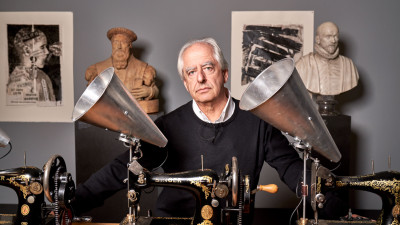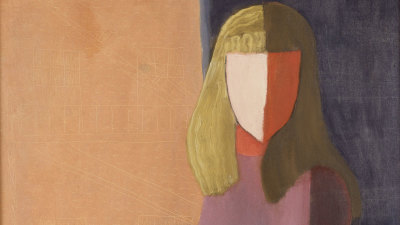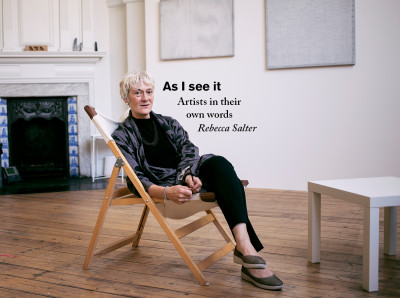Princes and painters: a who’s who of Charles I’s court
Princes and painters: a who’s who of Charles I’s court
By Sandra MacKenzie
Published 26 January 2018
Before you visit our blockbuster ‘Charles I’ exhibition, refresh your knowledge of Stuart history with our introduction to all the major players surrounding the King, matching up big names with impeccably painted faces.
-
-

The King: Charles I
1600-1649
Charles Stuart wasn’t born to be King. Although his father was King James I of Great Britain, he had a popular older brother, Henry, who was the heir apparent. Henry’s sudden death, aged 18, made the quiet and unassuming Charles the unexpected new heir.
Charles was crowned King in 1625. Convinced of his divine right to rule over his subjects, he enraged his ministers by refusing to listen to their counsel and dissolved Parliament four years into his reign. This left him with limited ways to raise funds for his treasury – an awkward position to be in, for a warmongering King with a taste for expensive clothing, furniture and of course, art. During his reign, he put together one of the most extraordinary art collections of his age, unprecedented in England. The collection has now been reunited for the first time in our exhibition Charles I: King and Collector.
Charles made it through 17 years of increasingly unpopular and authoritarian rule before the official outbreak of Civil War. Needing money to fight uprisings in Ireland and Scotland, he reconvened Parliament, only to be presented with the “Grand Remonstrance”, a lengthy list of grievances from his ministers. After his attempt to arrest the ringleaders failed, Charles declared war on Parliament.
After more than seven years of fighting, Charles’s last allies were defeated and he was charged with, and found guilty of, high treason. He was beheaded outside the Banqueting House at Whitehall Palace on 30 January 1649. His beloved art collection was dispersed at the “Sale of the Late King’s Goods”, organised by the new leader Oliver Cromwell to raise funds and pay off Charles’s debts.
Anthony van Dyck, Charles I in the Hunting Field, c.1635, 266 x 207 cm. Oil on canvas.
Paris, Louvre Museum, Department of Paintings. Photo © RMN-Grand Palais (musée du Louvre). Christian Jean.
-
-
-
The Queen: Henrietta Maria
1609-1669
The French princess Henrietta Maria was just 15 when she married 24-year-old Charles I. The wedding had been hastily arranged to secure Britain a French alliance against Spain; a consideration that temporarily trumped Henrietta Maria’s inconveniently devout Catholicism. Her religion, at odds with Protestant England, made her immediately disliked in her new home.
Following the assassination of Charles’s close companion and advisor, George Villiers, 1st Duke of Buckingham, in 1628, Henrietta Maria and her husband grew considerably closer. Having grown up at the French court, Henrietta Maria was accustomed to being surrounded by visual splendour and she was to play an active role in the selection and commission of new works for the Royal Collection in England.
With the Civil War looming, Henrietta Maria travelled to the Netherlands in 1642 to raise funds for the Royalist cause, selling her jewellery to buy weapons and hire soldiers before returning to England. When she was finally forced to flee to Paris in 1644, she took several paintings with her – possibly including Van Dyck’s Charles in the Hunting Field, above, which was notably absent from the sale of the King’s goods that followed his execution. Henrietta Maria lived to become Queen Mother to her eldest son, Charles II, when the monarchy was restored in 1660, before dying in her native France in 1669.
Anthony van Dyck, Henrietta Maria with Sir Jeffrey Hudson, 1633, 219.1 x 134.8 cm. Oil on canvas.
National Gallery of Art, Washington, Samuel H. Kress Collection, inv. 1952.5.39. Photo © Courtesy National Gallery of Art, Washington.
-
-
-

The Collector: The Duke of Buckingham
1592-1628
George Villiers enjoyed a meteoric rise through court society after attracting the eye of Charles’s father, James I, in 1614. By the age of 27, he had been promoted to Duke of Buckingham and was the King’s most trusted confidant. Persistent gossip about their relationship pushed James to publicly defend their closeness, telling councillors, “Christ had his John, and I have my George”.
An expert courtier, Villiers also befriended the future Charles I, securing his place at court after James’s death in 1625. Villiers was influential in developing Charles I’s love of art; the Duke had an extensive collection of his own and even attempted – unsuccessfully – to charm the French royal family into selling him the Mona Lisa.
Gifted at winning over monarchs and nobles, Buckingham inevitably also made several enemies on his way to the top. Just two years after Charles married Henrietta Maria to secure peace between England and France, war broke out. Buckingham led the English forces against France and Spain at La Rochelle, but was defeated. On returning to England to rally his troops, he was assassinated by a disgruntled soldier. He left behind two young sons, who were raised in the royal nursery with the King’s children.
Peter Paul Rubens, George Villiers, 1st Duke of Buckingham, on Horseback, 1625. Oil on panel, 46.6 x 51.7 cm.
Kimbell Art Museum, Fort Worth, Texas, inv. AP 1976.08. Photo © Kimbell Art Museum, Fort Worth, Texas
-
-
-
The Baroque Master: Peter Paul Rubens
1577-1640
Acclaimed as the leading artist of his age, Peter Paul Rubens unusually enjoyed an equally successful career as a diplomat. Overcoming the significant disadvantage of being born outside the nobility, Rubens’s charm, intelligence and outstanding skill as an artist endeared him to royal families across Europe.
Born in Antwerp in 1577, Rubens travelled widely but spent just nine months in England, arriving on a diplomatic mission in 1629. Officially there to negotiate peace between Charles I and his Spanish counterpart, Philip IV, Rubens also had the opportunity to examine a commission he had accepted some years previously but had yet to start: painting canvases to fill the grand ceilings of Inigo Jones’s new Banqueting House at Whitehall Palace.
After successfully arranging the exchange of ambassadors between England and Spain, Rubens returned to Antwerp, picking up a knighthood by way of thanks in his last meeting with Charles I. The ceiling canvases were subsequently delivered and installed by 1636, four years before the artist’s death. The majestic paintings, celebrating James I as a great leader and peacemaker, would have been one of the last things Charles I saw while walking from his old bedchamber in Whitehall Palace to his execution outside.
Peter Paul Rubens, Self-portrait, 1623. Oil on panel, 85.7 x 62.2 cm. RCIN 400156.
Royal Collection Trust / © Her Majesty Queen Elizabeth II 2018. View online at Royal Collection Trust.
-
-
-

The King’s Painter: Anthony van Dyck
1599-1641
Appointed “principalle Paynter in Ordenarie to their Majesties” at the Stuart Court in 1632, Anthony van Dyck is responsible for producing the most iconic images of Charles I, his family and their inner circle, many of which are now on display in the Royal Academy galleries.
Born in Antwerp in 1599, Van Dyck was a teen prodigy who blossomed as an assistant to his celebrated compatriot, Peter Paul Rubens. Following a brief trip to England in 1620, he spent six years in Italy and became captivated by the work of Titian, filling a sketchbook with a number of drawings after paintings by the 16th-century master. He established a reputation as the leading portraitist of his day, winning commissions from aristocrats across Europe.
Determined to tempt Van Dyck to his court, Charles welcomed the artist with a knighthood, a generous salary and a studio at Blackfriars. Van Dyck’s paintings were received with much praise by the British nobility, but he remained restless, travelling to Antwerp and Paris in search of alternative opportunities. He fell ill in 1641 and died in London that December, just before the outbreak of Civil War.
Anthony van Dyck, Anthony van Dyck, c.1640. Oil on canvas, 56 x 46 cm.
National Portrait Gallery, London. Purchased with help from the Art Fund, 1965. Photo © National Portrait Gallery, London.
-
-
-
The Prince: Charles II
1630-1685
Best remembered today for his parade of mistresses and popular decision to reopen the nation’s theatres, Charles II enjoys a reputation as the “Merry Monarch” – despite also ruling through the Great Plague and Fire of London. His time as King was still a considerable improvement from his early life as a Prince, which saw him fighting in the Civil War at 12 years old and exiled to the continent shortly afterwards. Following the death of Oliver Cromwell, Charles II was welcomed back to Britain and crowned in 1660. He demanded the return of all royal items sold off after Charles I’s execution, recovering a significant part of his father’s treasured art collection. Charles II’s own artistic interests followed a more personal agenda: in addition to commissioning works emphasising the majesty of the crown, he also had full-length portraits painted by his own court artist, Peter Lely, of each of his mistresses, known as the Windsor Beauties. The paintings remain in the Royal Collection and can be seen in Charles II: Art and Power at The Queen’s Gallery, Buckingham Palace.
Despite acknowledging at least a dozen illegitimate children, Charles never produced an heir. Upon his death, the crown passed to his unpopular Catholic brother, James II, who was deposed after just four years by his daughter and her husband: Mary II and William III.
William Dobson, Charles II, when Prince of Wales, with a Page, c. 1642. Oil on canvas, 153.6 x 129.8 cm.
National Galleries of Scotland. Purchased 1935, inv. PG 1244. Photography Antonia Reeve. © National Galleries of Scotland.
-
-
Charles I: King and Collector is at the RA from 27 January to 15 April 2018.
Exhibition organised in partnership with Royal Collection Trust.
Charles II: Art and Power is at The Queen’s Gallery, Buckingham Palace until 13 May.
-
-

RA250 memberships
To celebrate our 250th birthday in 2018, we are offering limited edition memberships – giving you the opportunity to get closer to the New Royal Academy of Arts and our expanded programme.
-










